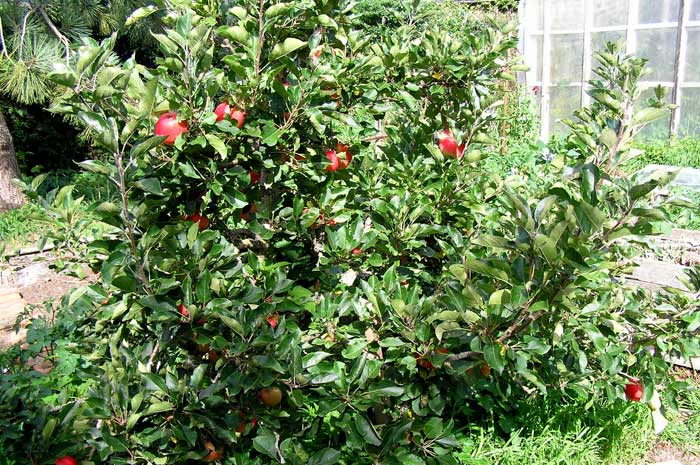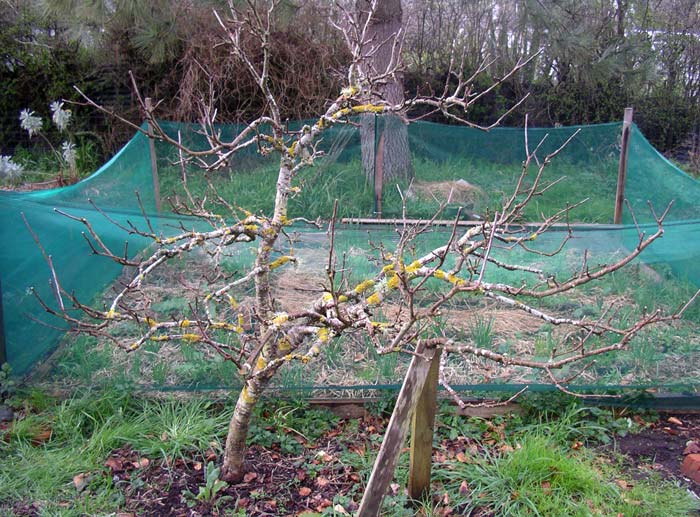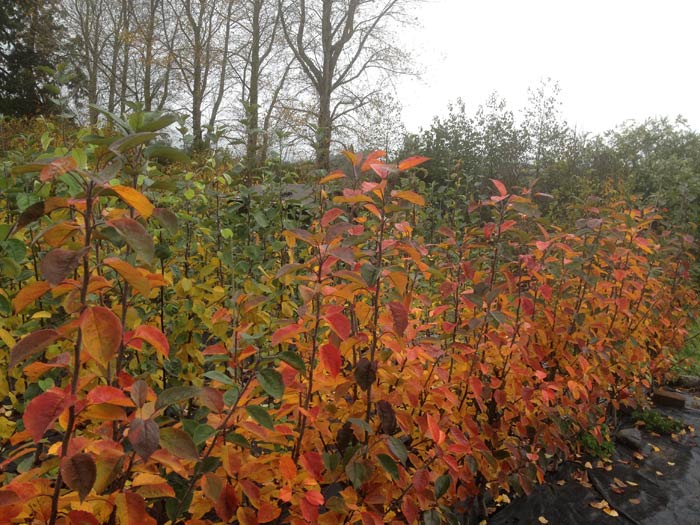 Semi-Dwarf Discovery Apple Tree. 1.8m high and 2.5m wide! With a good heavy crop.
Semi-Dwarf Discovery Apple Tree. 1.8m high and 2.5m wide! With a good heavy crop.
The primary reason that we like grafted fruit trees is that by grafting onto specially bred rootstock we can reduce the size of the tree when it is mature. The trees are then easier to manage, the fruit easier to reach and we can fit more variety of trees into a smaller space.
Specifically this winter I am promoting a great range of heritage apples that I have grafted onto the semi-dwarf rootstock called M26 (bred by the good people at the East Malling Research Station in England). This makes a fantastic multi-purpose size apple tree, it dwarfs the tree size to thirty to fifty percent of normal size, that is, around two to three meters high and wide. This is a little under M106 which dwarfs to sixty to seventy percent. It still has good vigor and robustness compared to a full dwarf apple on a rootstock such as M9 which dwarfs to a quarter of full size. It is also cold hardy so can also be used in inland gardens.
Another great feature of this rootstock is that it is as vigorous in its first few years as the more vigorous stocks, so establishes quickly, and it is precocious, that is, it starts fruiting at a young age. You can expect twenty to thirty fruit in the third year from planting.
Heritage apples grafted on M26 are a great choice for espalier, growing against a fence or wall or over a pergola or pathway arch. These make beautiful and productive dividers or backdrops for vegetable gardens or edible courtyards. All of these situations call for a tree to mature at around two to three meters high. M26 will quickly grow to fill the space and enjoy the support of the structure for the early heavy crops. As an espalier or against a fence two metres high expect the tree to cover two to three metres of wall, therefore plant them this distance apart. If you really want to pack in the varieties to ensure a great variety of tastes, uses and seasons of use, then plant an inclined cordon at one meter spacing.
 Winter Pruned Semi-Dwarf Discovery
Winter Pruned Semi-Dwarf Discovery
Apples on M26 are also used in permaculture food forest plantings as understory or edge trees. Food forests use the observed patterns of natural woodlands to inspire the design of productive gardens / orchards, thus utilising space effectively by stacking vertically layers of edible and useful plants. Apples on M26 can be used in either the low tree layer (use early varieties, cooking varieties and varieties suited to cool summers) or as part of the forest edge (use sun loving varieties). When growing M26 as a freestanding tree, always stake it to get it going and to take the weight of early crops and keep it staked if any winds are likely to catch it.
 Two year old M26 apple trees from our nursery will be quick to crop in your garden.
Two year old M26 apple trees from our nursery will be quick to crop in your garden.
See our catalogue for a great range of heritage apples on M26 rootstock, some varieties also available as two year old M26.
If you are after a larger tree to eventually sit under, if you have heavy soils, or there is going to be competition for the tree then choose a more vigorous rootstock such as M106 or M793.